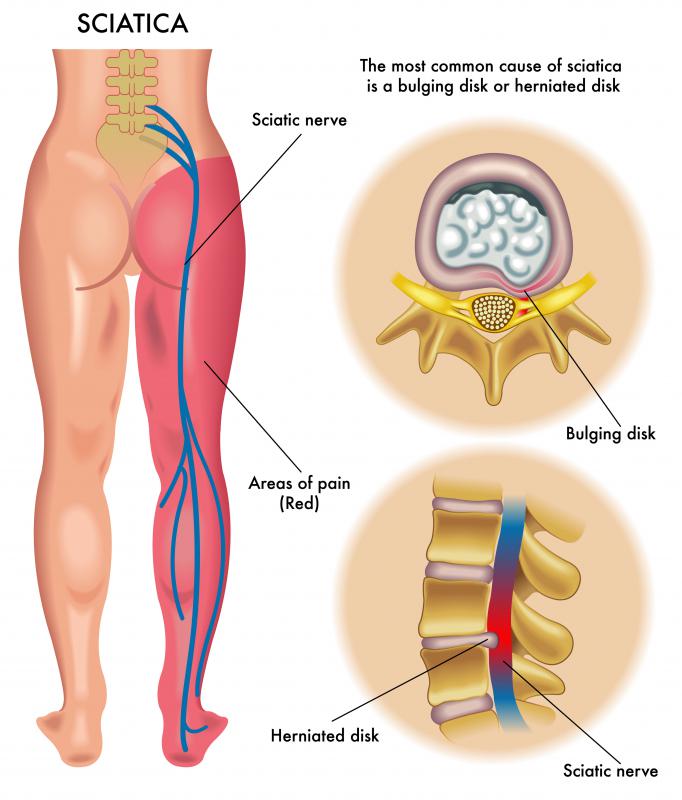At TheHealthBoard, we're committed to delivering accurate, trustworthy information. Our expert-authored content is rigorously fact-checked and sourced from credible authorities. Discover how we uphold the highest standards in providing you with reliable knowledge.
What is the Sacral Region?
The sacral region, also known as the sacrum, of an adult human being consists of four or five vertebrae fused into a triangular shape. These are located below the lumbar region of the spine and above the coccyx. The sacral region forms the back wall of the pelvis between the two hip bones and has wing-like structures called alae which move the sacrum as the pelvic blades moves.
In children and young adults the vertebrae of the sacral region grow together, gradually becoming completely fused, generally by the time a person reaches the age of 26. The sacrum has four openings through which blood vessels and the sacral nerves travel as well as the spinal nerves from the lumbar vertebrae. The region is shaped differently in females and males — in males it is narrower and taller than it is in females.

Spinal nerves are protected by the uppermost part of the sacral region and divide into sacral nerves inside of it. The spinal nerves continue into the area from the lumbar region above it. The lumbo sacral region is the name typically given to the area encompassing the lumbar region of the spine above the sacrum.
The lumbo sacral region often is a source of pain for people who have experienced damage to the wedge-shaped disc between the last vertebra of the lumbar region and the upper part of the sacrum. The area often becomes herniated because of the wear and tear from twisting and turning. This typically results in pain and numbness that can radiate through the leg down to the feet — a condition commonly known as sciatica.

The sacral region also connects to each hip bone at the sacroiliac joint. These joints, along with the sacrum itself and the lumbar region take much of the stress of the human body's twisting and turning motion. Damage at the sacroiliac joints can also be responsible for symptoms similar to those of sciatica and sacrum pain.
Another connection exists between the sacral region and the coccyx. The coccyx is also generally known as the tailbone. The region encompassing the sacral and coccyx regions can be referred to as the sacro coccygeal region. As in the sacrum, the vertebrae of the coccyx are also fused together.
Sometimes, the coccyx becomes traumatized by injury, possibly from a fall or childbirth. Resultant pain is known as coccydynia. Coccyx injury often leads to inflammation at the sacro-coccygeal joint which can be another source of pain in the sacrum.
AS FEATURED ON:
AS FEATURED ON:


















Discussion Comments
My sister had been experiencing horrible back pain that traveled down to her legs. Her doctor diagnosed her with sciatica.
After reading this, I think I know why she may have developed so much pain. She fell and broke her tailbone as a young child. She might be experiencing coccydynia as well as sciatica. Either way, since the tailbone and the sacral region are connected, I imagine her pain travels between the two.
She went to see a chiropractor, and he did relieve her of some pain initially. However, the pain seemed to return and require frequent visits, so she stopped going.
Post your comments